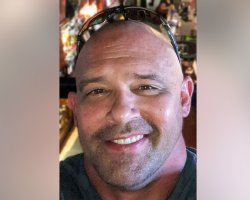Washington State, Opioid Overdoses, and One Representative’s Efforts to Solve the Crisis

Like many, I’m concerned about the 19.7 million people in our country who struggle with addiction, so I keep my ear close to the ground on all drug-related issues. When I saw a report from last year in the Golden State Sentinel that presented one representative’s efforts to change opioid pharmaceutical prescribing, I was immediately interested.
The opening line of that report reads: “In an effort to reduce opioid addiction and drug overdoses in Washington state, Rep. Gina McCabe has sponsored a bill that would require doctors to warn patients about the risks of opioid use.“ Finally, some good news.
Washington State Makes a Move to Curb Opioid Overdoses
Representative McCabe introduced House Bill 2447, a bill which outlines best practices for Washington State doctors when it comes to opioid prescribing. Some of the requirements listed are:
- Medical practitioners must discuss the risks of opioid pharmaceuticals with their patients.
- Medical practitioners must discuss and advise on alternatives to opioids.
- The Washington State Department of Health must post warnings about opioid pharmaceuticals on their website.
“… when a doctor prescribes an opioid for pain management after a surgery, he or she is not required to discuss the risks of that drug with you….”
According to the Sentinel Article, Representative Gina McCabe felt strongly about her bill, saying that “Overdoses are now the leading cause of accidental deaths in Washington state, more so than car crashes. When you get a flu shot, you’re provided written information on the side effects of the vaccine, yet when a doctor prescribes an opioid for pain management after a surgery, he or she is not required to discuss the risks of that drug with you. That seems inconsistent, especially given how deadly this epidemic has become.“

I could not agree with her more. Exactly 694 people died from overdoses in Washington in 2016. Non-fatal opioid overdoses led to 1,400 hospitalizations in that same year. How many of those overdoses, fatal and non-fatal alike, would have been prevented had Washington patients known about the risks involved in taking those drugs? How many would have chosen safer alternatives? How many would have been more conservative and cautious in their consumption? How many would have refrained from taking that “one extra pill” when the pain was a little worse than usual?
The report goes on to talk about hard-hitting facts as brought to us by the Centers for Disease Control and Prevention. For example, the CDC estimates that for patients who are prescribed opioids for long-term pain treatment, one in four of them end up becoming addicted to the very drugs which are supposed to help them. Why would anyone take a medication which has a 25 percent chance of ruining their life? It’s time the whole nation woke up to this harsh truth. It’s time we started seeing bills like 2447 being adopted in every state.
The Value of Informed Consent
Informed consent is defined as a patient’s agreement to accept a prescription for medication only after receiving full information about the potential risks and side effects of that medication. For years, informed consent has been a bit of a gray area in medicine. Doctors are supposed to ensure that they have their patient’s informed consent before they prescribe a potentially risky medication. But this area of medicine gets glossed over often—and that’s wrong.
Washington State is making an effort to require informed consent on opioids. Realistically, this should be a federal law, and it’s a little discouraging that it isn’t yet. Given how dangerous opioid pharmaceuticals are, every doctor in the nation should be strongly cautioning their patients on these substances and encouraging alternatives to pain relief. Opioids should always be an absolute last resort.
Washington State is not the first state government to demand change in opioid prescribing practices—and it won’t be the last. Other states have taken up this mantle, some to raucous success, others not quite garnering enough public support to be successful in effecting any real change. Even governmental organizations are making noise about the need for change in our country’s prescribing habits. The Centers for Disease Control and Prevention published a list of guidelines on ethical and conservative prescribing techniques, and they sent it to doctors all across the nation in 2016.
Creating a Better Future

I quote a research paper from the National Survey on Drug Use and Health, the same publication which gave me the “19.7 million people addicted” figure I referenced in the opening paragraph of this article:
“In 2017, approximately 19.7 million people aged 12 or older had a substance use disorder (SUD) related to their use of alcohol or illicit drugs in the past year, including 14.5 million people who had an alcohol use disorder and 7.5 million people who had an illicit drug use disorder. An estimated 2.1 million people had an opioid use disorder, which includes 1.7 million people with a prescription pain reliever use disorder and 0.7 million people with a heroin use disorder.“Just those two sentences, researched by the NSDUH and published by the Substance Abuse and Mental Health Services Administration, carry so much weight and significance. We need to recognize the sheer width and breadth of this country’s drug problem. It is not an unknown issue. The facts and all the evidence are there. 19.7 million people represent just over 6 percent of our nation’s total population of 327 million. That means that if you know 100 people (which you probably do), six of them are statistically likely to be addicted to drugs or alcohol.
It’s still a little early to get specific metrics of the success of Washington State’s changes in its pharmaceutical space, but they’re moving in the right direction, and that is really all I’m asking for. I just want to see the rest of the states moving in the right direction. I know once we get this ball rolling, we’ll pick up speed, we’ll create momentum and inertia. And like any rock which moves with a thunderous crash down a mountainside, we will become an unstoppable force of teamwork and nationwide solidarity—a nation committed to ridding our beautiful land from the mire of opioid addiction.
Sources:
- https://www.goldendalesentinel.com/story/news/mccabe-sponsors-opioid-bill.html
- https://www.samhsa.gov/cbhsq-reports/NSDUHFFR2017.pdf
- https://www.cdc.gov/drugoverdose/pdf/Guidelines_Factsheet-a.pdf


 ®
®